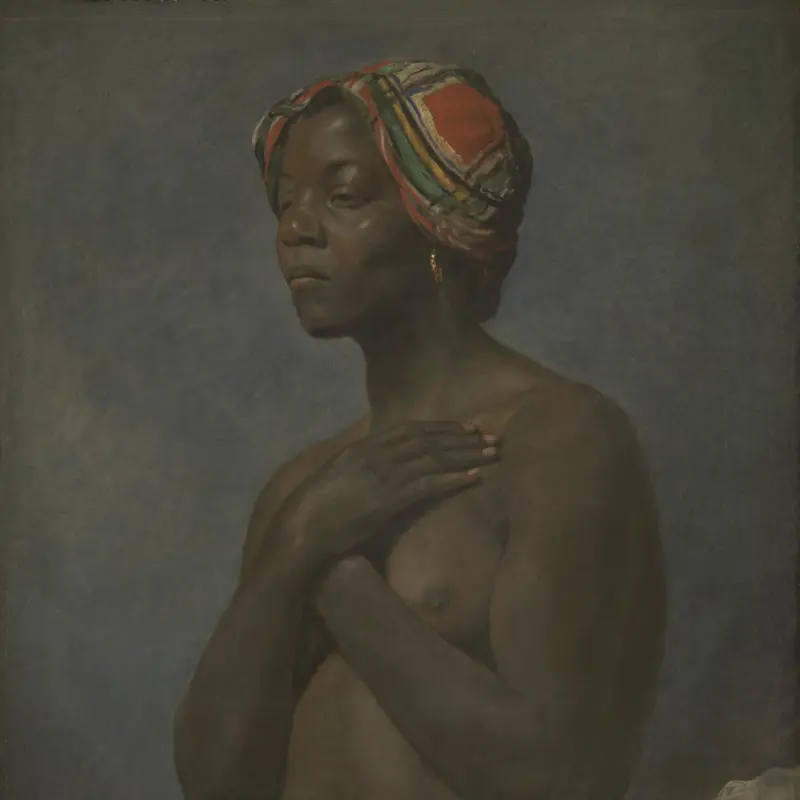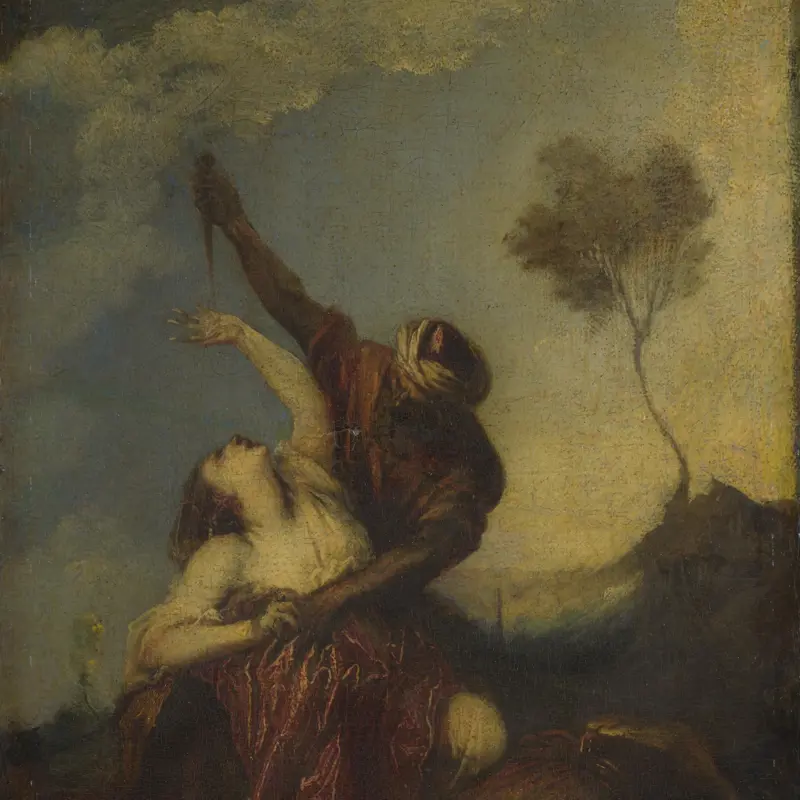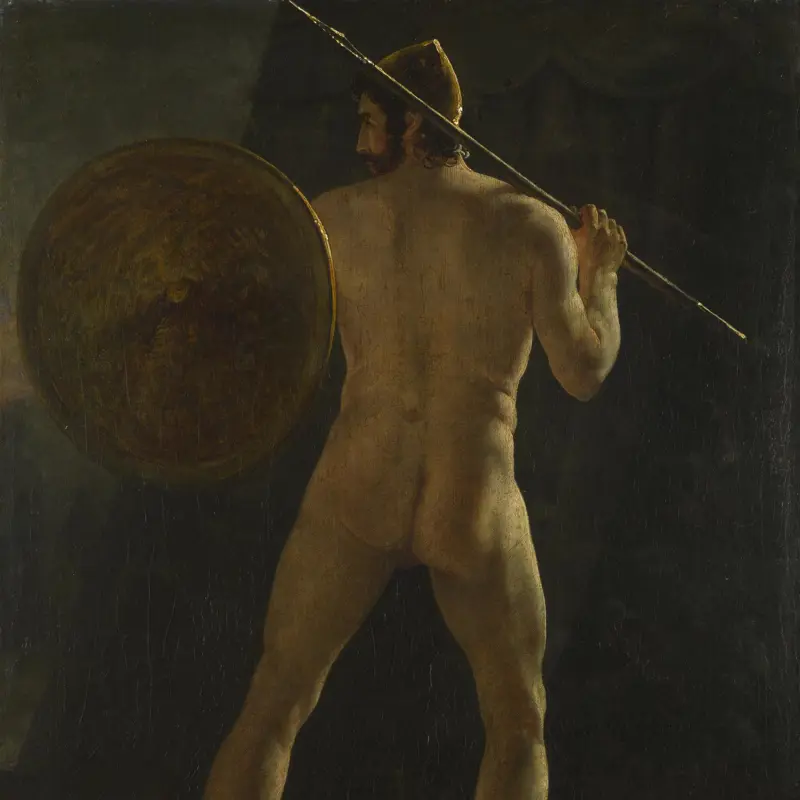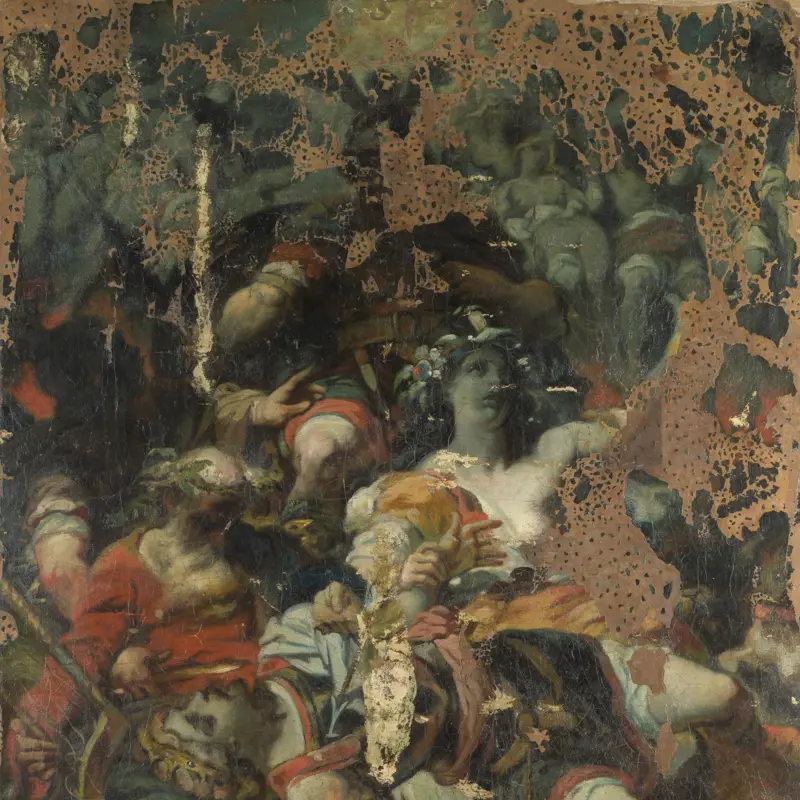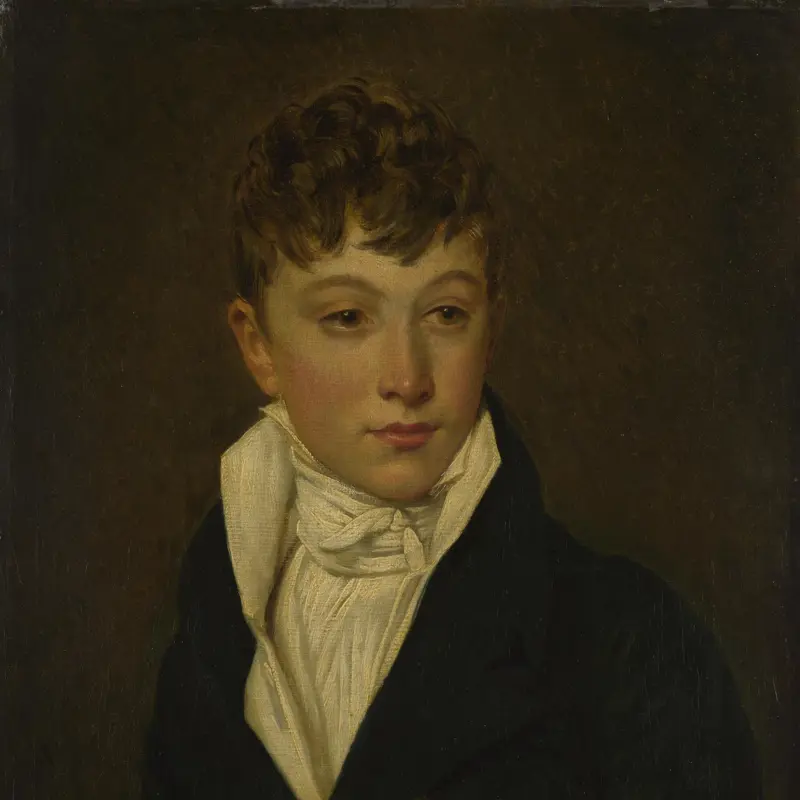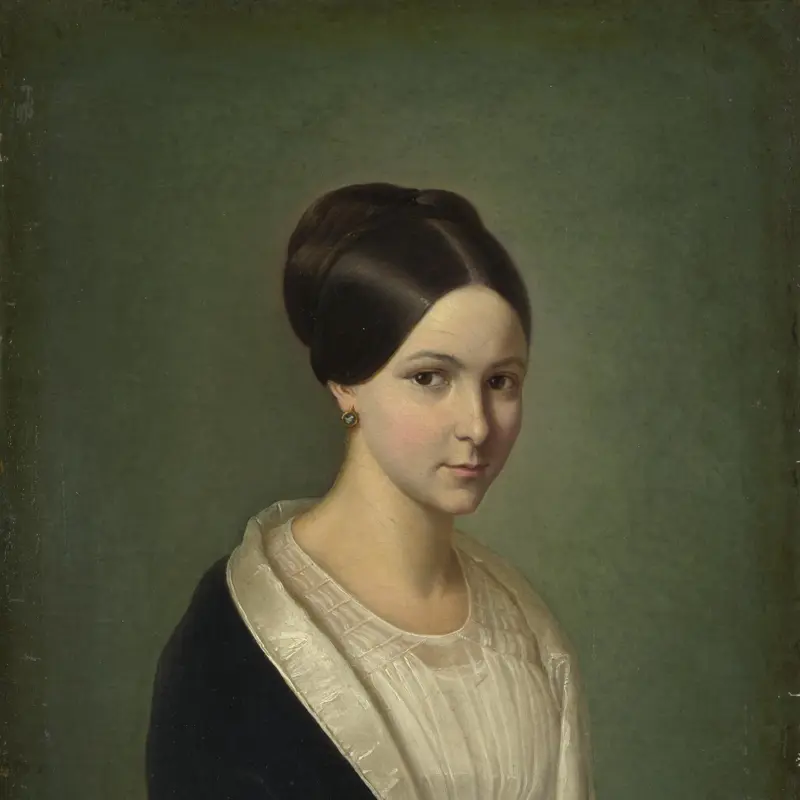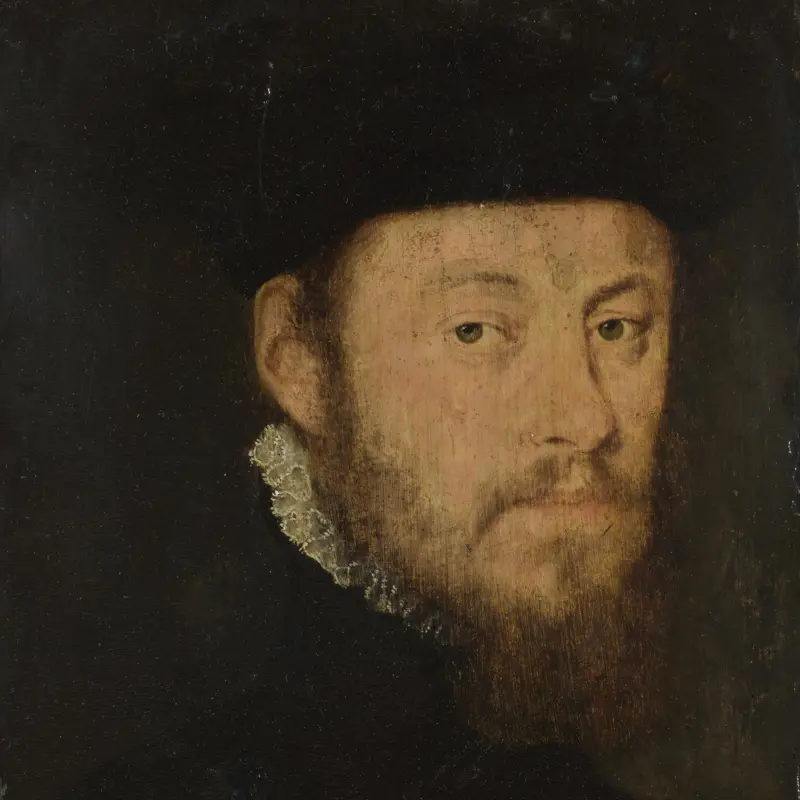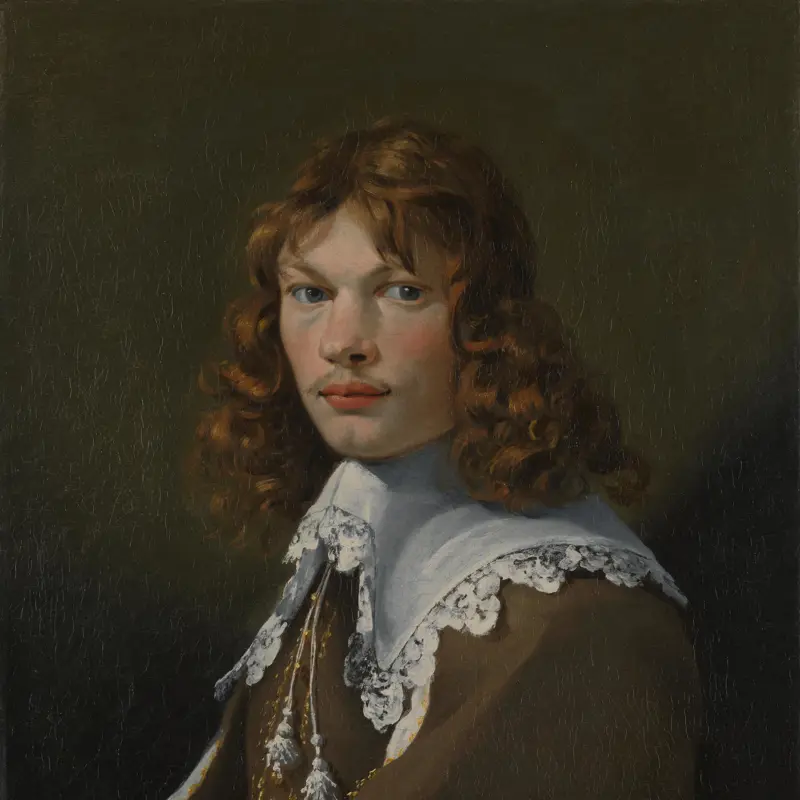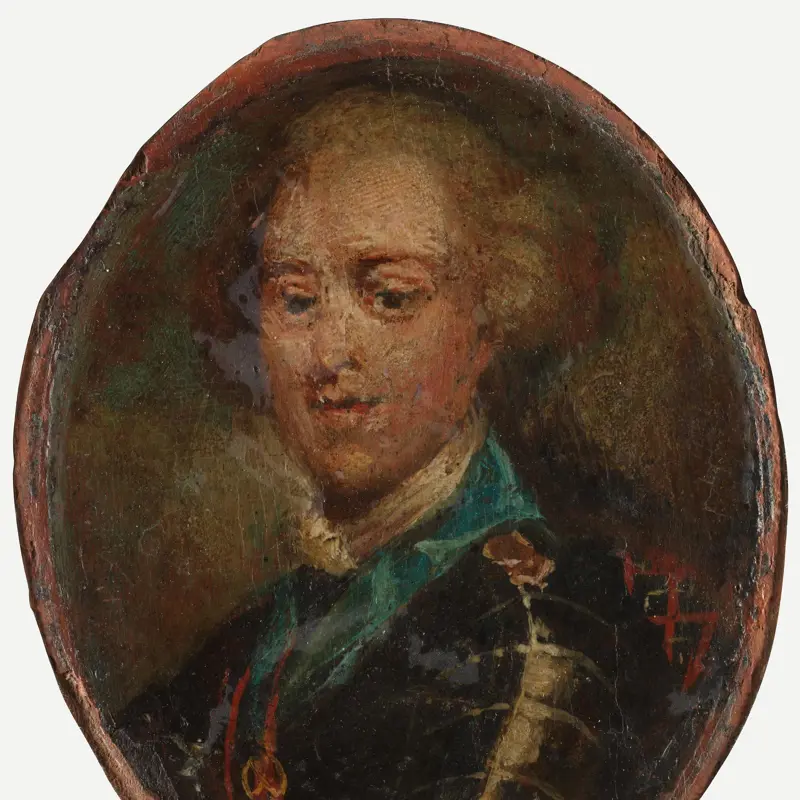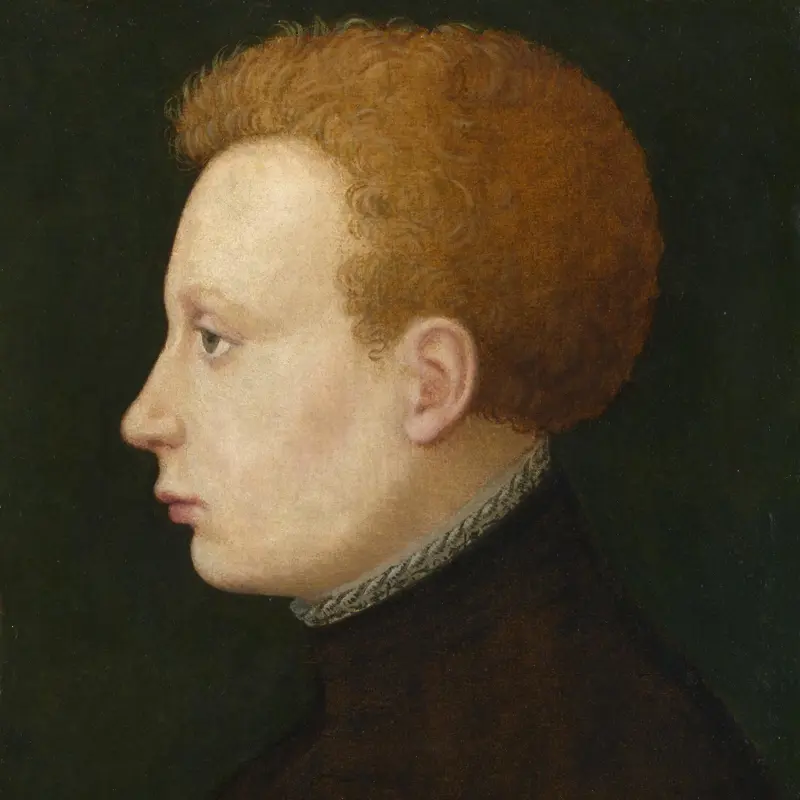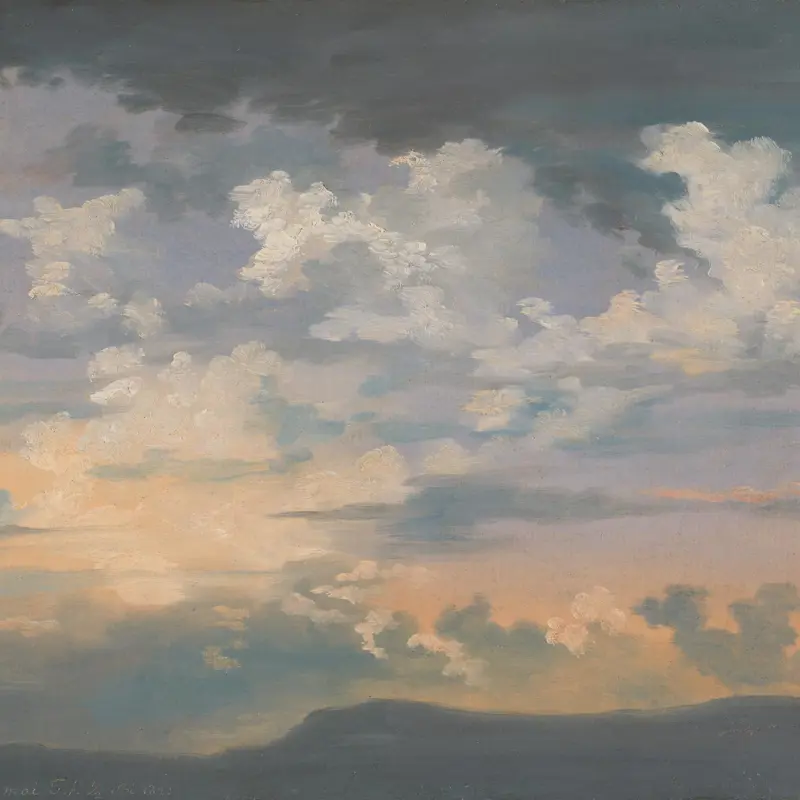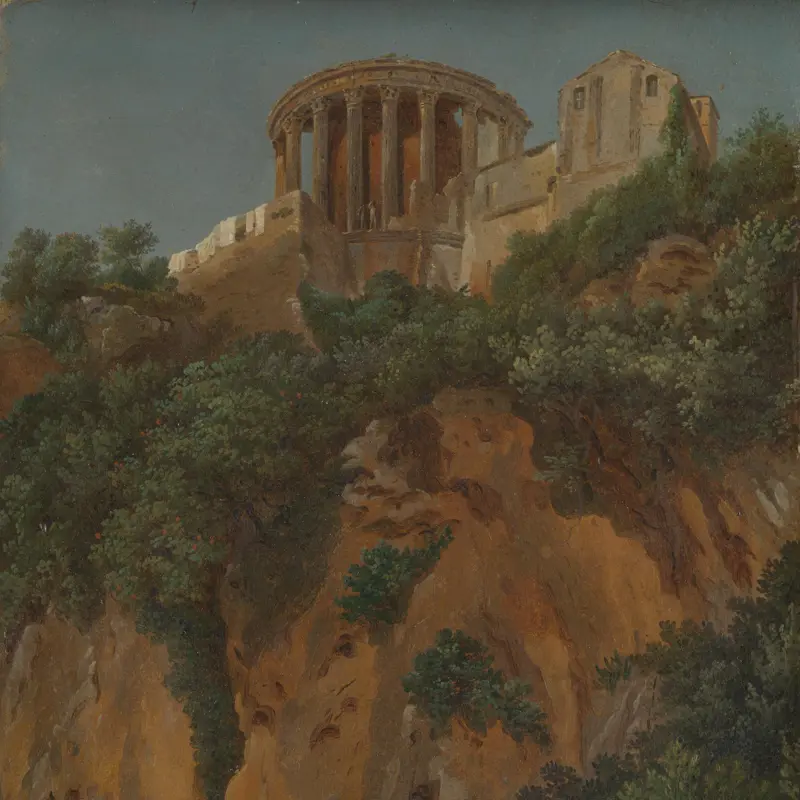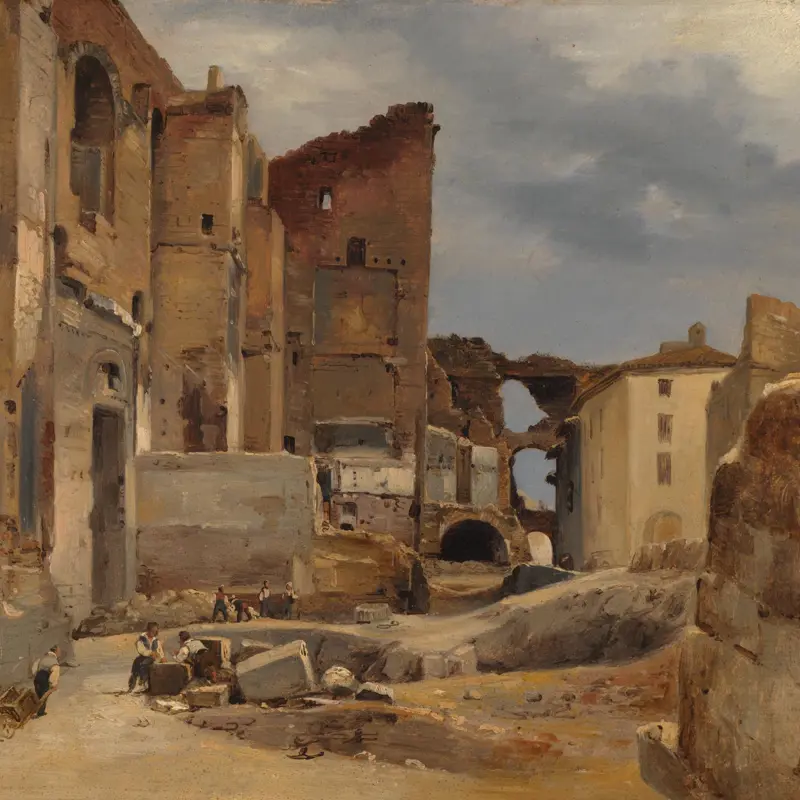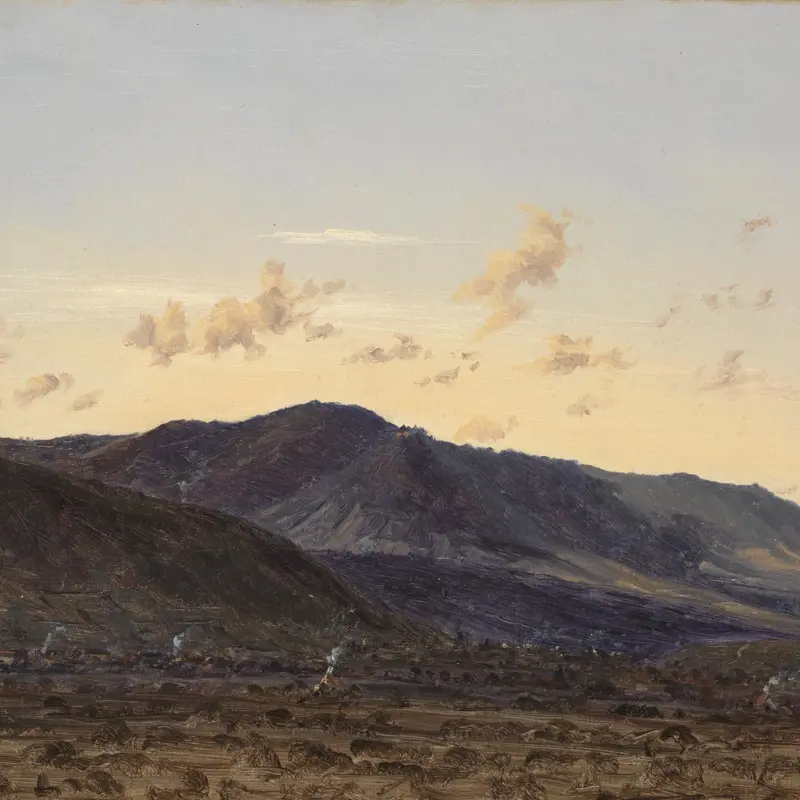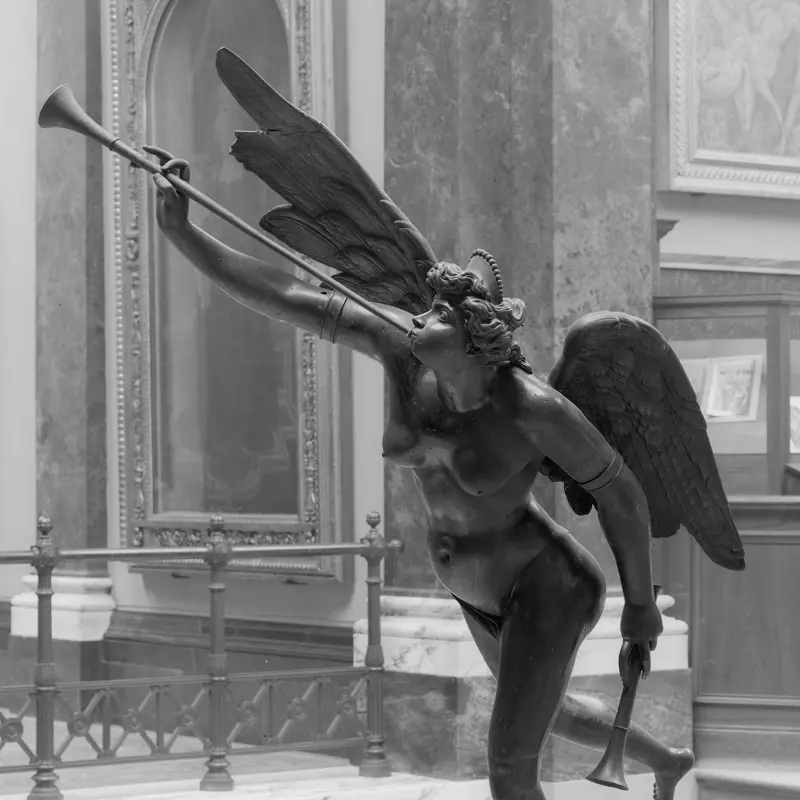French, 'A Domestic Scene', late 1770s
About the work
Overview
Scenes of mothers and children were fashionable in eighteenth-century France, much encouraged by the writings of Jean-Jacques Rousseau, who advocated a ‘natural’ approach to child-rearing.
A young mother is sitting in a beam of light at a table with three of her infants wriggling on her lap. An older child is seated at the table, while another plays in the shadows on the floor and a baby’s cradle is rocked by an old woman. The young servant’s headdress and the straw-covered flask of wine on the table suggest that the artist was in or knew Italy. They were clearly familiar with Greuze’s painting The Well-Beloved Mother (private collection, Madrid) as the group of the mother and children is very similar.
We do not know who painted this picture. Although Jean-Honoré Fragonard produced sketchy interior scenes with working women during his first stay in Italy in 1756–61, the brushwork does not resemble his extremely fluid way of painting.
Key facts
Details
- Full title
- A Domestic Scene
- Artist
- French
- Date made
- late 1770s
- Medium and support
- oil on canvas
- Dimensions
- 37.5 × 48.3 cm
- Acquisition credit
- Salting Bequest, 1910
- Inventory number
- NG2620
- Location
- Not on display
- Collection
- Main Collection
- Previous owners
Provenance
Additional information
Text extracted from the ‘Provenance’ section of the catalogue entry in Humphrey Wine, ‘National Gallery Catalogues: The Eighteenth Century French Paintings’, London 2018; for further information, see the full catalogue entry.
Bibliography
-
1946Martin Davies, National Gallery Catalogues: French School, London 1946
-
1957Martin Davies, National Gallery Catalogues: French School, 2nd edn (revised), London 1957
-
2001
C. Baker and T. Henry, The National Gallery: Complete Illustrated Catalogue, London 2001
-
2018Wine, Humphrey, National Gallery Catalogues: The Eighteenth Century French Paintings, London 2018
About this record
If you know more about this work or have spotted an error, please contact us. Please note that exhibition histories are listed from 2009 onwards. Bibliographies may not be complete; more comprehensive information is available in the National Gallery Library.

